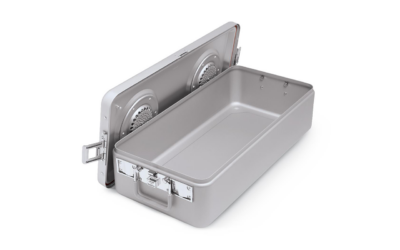A February 2018 report from ResearchAndMarkets.com titled “Patient Safety in Healthcare, Forecast to 2022” estimates that various adverse events put an additional cost burden of $317.9 billion on hospitals across the U.S. and Western Europe, adversely affecting 91.8 million patients and leading to 1.95 million deaths in 2016. The cost burden is expected to increase at a compound annual growth rate (CAGR) of 3.2 percent to reach $383.7 billion by 2022.
The ResearchAndMarkets.com study is a comprehensive analysis of 30 of the most pressing patient safety adverse events affecting patients, care givers and health care organizations across the globe. The study measures the current and forecast cost impact, number of incidences and mortality of individual adverse events.
It goes on to list the top adverse events, current investment trends and forecast stakeholder interests. It also analyses the current competitive environment, most impactful vendor solutions addressing the top patient safety issues and their future market potential.
The ResearchAndMarkets.com study also highlights some of the most innovative and promising solutions capable of disrupting the market as well as convergence of new technologies entering the field. It concludes with its five most-compelling future growth opportunities, key strategies for growth and implementation challenges.
Some key areas of discussion within the report include:
• Patient Care Management (medication safety, wrong patient/site/indication (WPSI) events, patient falls, pressure ulcers, antibiotic resistance, patient handoff safety, maternal death and diagnostic safety)
• Health IT Management (EHR/ EMR Safety, alarm fatigue, lack of patient engagement, hospital outcomes data transparency, protected health information (PHI) compromise, unnecessary emergency department (ED) admissions, and medical device cyber-security)
• Surgical Care Management (CAUTI, vascular catheter infections, HAP/ VAP, venous thromboembolism, surgical site infections (SSI), sepsis, air embolism, foreign object post-surgery, off-label drug/device usage)
• Environment and Workforce Management (burns/thermal injuries, anesthesia safety, electrocution, healthcare worker (HCW) immunization, occupational physical safety hazards, and psychological health of HCW)
A recent Frost & Sullivan’s analysis on patient safety in health care covers innovative and promising solutions, convergence of new technologies, key market participants and more.
“In the next four years, adverse patient safety events in the United States and Western Europe such as healthcare associated infections (HAIs), sepsis, medication safety, pressure ulcers, diagnostic errors, antibiotic resistance and hand hygiene non-compliance will drive an estimated health care cost burden of $383.7 billion,” according to a press release regarding the Frost & Sullivan report. “While some adverse events, such as medication safety and hand hygiene non-compliance, are relatively well addressed by current industry solutions, under-penetrated areas such as antibiotic resistance, pressure ulcers, sepsis and unnecessary ED (emergency department) admissions will be the high opportunity growth areas for future.”
In the next four years, Frost & Sullivan predicts the following developments:
• Patient safety transitioning from an ancillary to a core value proposition for care providers
• High adoption of patient and asset tracking as well as identification technologies
• Increased consolidation in the industry with large med-tech companies going for provision of targeted solutions for key unmet need areas
• Significant use of remote health care technologies such as Internet of Medical Things (IoMT) coupled with increasing health care data exchange, leading to disproportionate increase in cybersecurity risks such as protected heath information (PHI) compromise and medical device/ implants data breach
• Collaboration to develop guidance documents and draft policies for best practices on risk mitigation.









